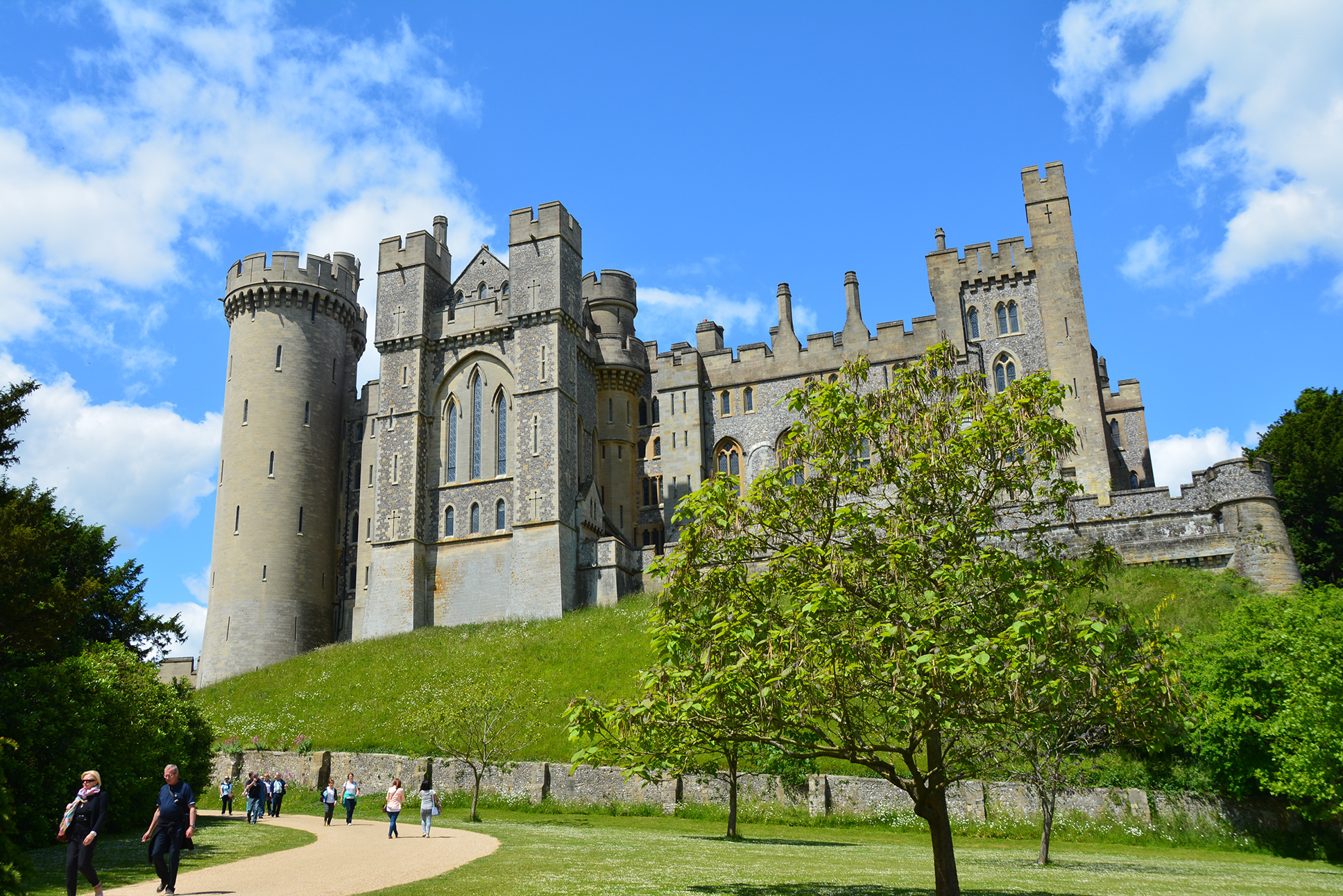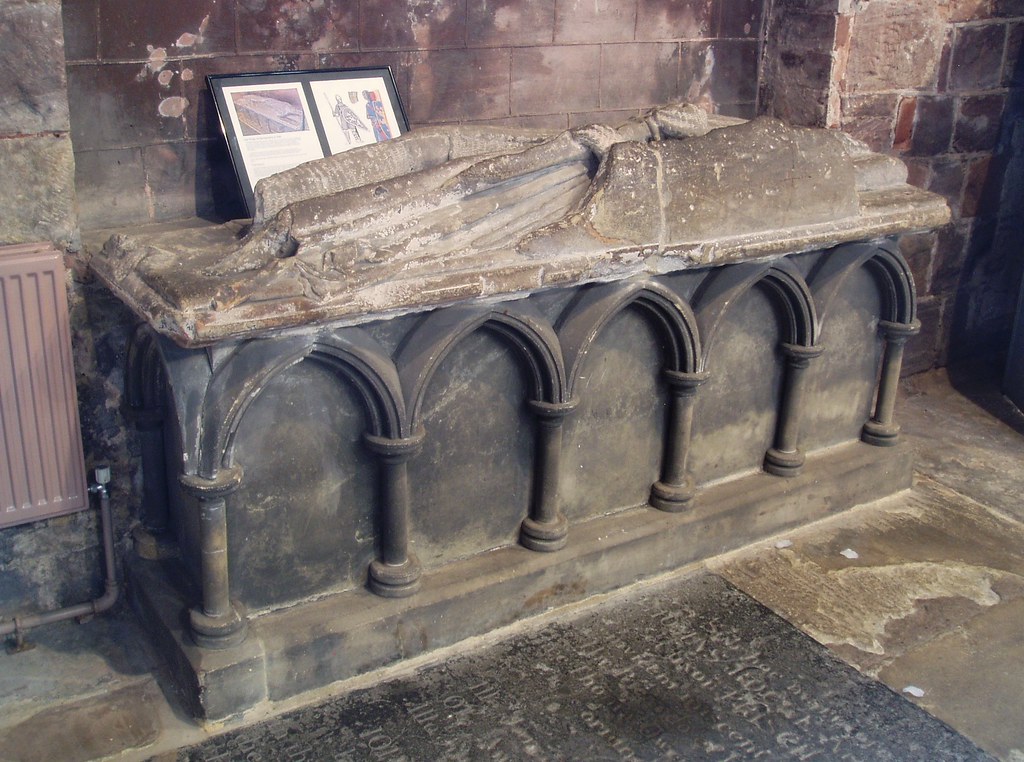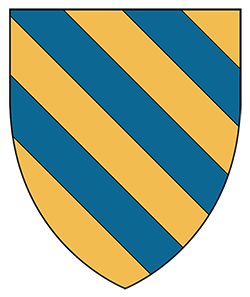Roger de Montgomery - 1st Earl of Shrewsbury
Kinsman, friend, and trusted companion
Roger de Montgomery was a French Norman magnate and one of William the Conqueror's principal counselors. He was described as William's kinsman, friend, and trusted companion, who supported him through challenging times when William struggled to take control of Normandy.

Roger de Montgomery was born around 1022. He was the son of another Roger de Montgomery, seigneur of Montgomery, viscount of Hiémois, and his mother's name was Emma. Montgomery refers to the region in two neighboring modern French municipalities, Germain-de-Montgommery and Sainte-Foy-de-Montgommery, both in the department of Calvados.
The elder Roger had extensive lands in the valley of the River Dives in Normandy, which the younger Roger inherited in 1055. Roger was listed frequently in Norman court records in the 1040s and 1050s.
Between 1050 and 1054, Roger de Montgomery married Mabel de Bellême, an heiress to a large land area between Normandy and Maine. They had 10 children together, six sons and four daughters. His wife Mabel was murdered in December of 1077 by Hugh Bunel and his brothers, who Mabel had deprived of their paternal inheritance. It is said they rode to her castle of Bures-sure-Dives and cut off her head while she lay in bed.
Roger married again to Adelaide du Puiset, with whom he had one son, Everard, who would later enter the Church.
By the time of the Council of Lillebonne in January of 1066, Roger was one of William's principal counselors, who played a significant role at the Council, where William's plans for the invasion of England were approved. When William and the Normans set off for England in the fall of 1066, Roger stayed behind to help govern Normandy, joining the King in England in 1067.
In late 1067, William granted Roger nearly all of what is now West Sussex, which included 83 manors. In 1071, Roger was further granted estates in Shropshire, which accounted for most of that county. He was also named Earl of Shrewsbury.
In 1067, Roger also began building Arundel Castle on his lands in Sussex. The first castle was a motte-and-bailey-style castle made of wood. The original motte still stands over 100 feet high, now crowned with a stone shell keep. Roger was also named the Earl of Arundel, likely in 1071. Arundel Castle has been the seat of the Dukes of Norfolk for over 850 years.
Besides his new lands in Sussex and Shropshire, Roger also had manors in Surrey, Hampshire, Wiltshire, Middlesex, Gloucestershire, Worcestershire, Cambridgeshire, Warwickshire, and Staffordshire. His estates raised an income of around two thousand pounds a year, about 3% of the country's income at the time.
Between 1070 and 1074, Roger built another wooden motte-and-bailey-style castle in Shropshire called Montgomery Castle. It was later called Hen Domen after another Montgomery Castle was built nearby by Hubert de Burgh sometime after 1223.
In 1083, Roger de Montgomery founded the Abbey Church of the Holy Cross, commonly known as Shrewsbury Abbey. On February 23rd, 1083, the earl gathered his senior officials and publicly pledged himself to found a new Abbey, laying his gloves on the altar of St. Peter.
In 1087, after the death of William I, Roger joined with rebels to overthrow the new King William II in support of Robert Curthose, William II's brother, in the Rebellion of 1088. But William convinced Roger to abandon the rebels and side with him. The rebellion was defeated, and the other rebels who rose against William lost their lands in England.

Roger de Montgomery died in Shrewsbury, England, on July 27th, 1094, after being clothed as a monk for three days before his death. He was buried at the Abbey of Saint Peter and Saint Paul, later called Shrewsbury Abbey, which he founded.
After his death, Roger's estates were split into two. His eldest surviving son, Robert de Bellême, received most of the Norman and his mother's estates. His son, Hugh, inherited the bulk of the estates in England, including the Earldom of Shrewsbury. After Hugh's death, the earldom passed to Robert.
